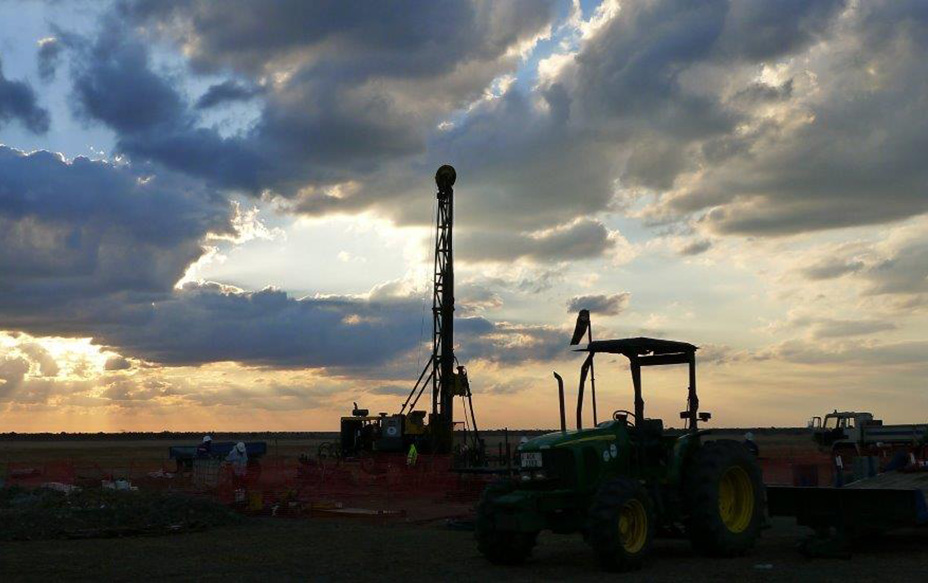Kalahari GeoEnergy is set to begin the initial phase of operations at Zambia’s Bweengwa geothermal site, with plans to increase capacity to 12 MW by 2030.
Partnership and Progress
Kalahari GeoEnergy (Kalahari), in collaboration with greenCrowd and the International Geothermal Association (IGA), has released a new document detailing the progress of the Bweengwa geothermal project in Zambia.
The project is being developed in strategic stages with the aim of reaching a 12-MW capacity by 2030. By July this year, a 20-kW tri-generation demonstration ORC plant will be launched to generate electricity and thermal energy for a Multi-Facility Economic Zone.
The primary user of this energy will be a dairy product processing plant near the geothermal site.
Future Upgrades
This demonstration plant will be upgraded to 150 kW in January 2025 to supply more energy for expanded direct-use applications, such as refrigeration for meat and agricultural products.
Depending on funding milestones, Kalahari plans to scale up to 3 MW by 2025, 8 MW by 2027, and 12 MW by 2030. The plan includes drilling six utility-scale production wells.

The Bweengwa geothermal project has a long history. In 2011, Kalahari signed an MOU with the Zambian government for geothermal energy rights for “certain identified targets.”
By 2012, Kalahari had identified the southern margin of the Kafue Rift, known as the Bweengwa River Area, as a potential site for geothermal energy production.
Exploration and Capacity Estimates
Over the years, several temperature gradient holes were drilled, followed by a slim hole drilling program that began in 2019.
By 2021, Kalahari announced an estimated capacity of 5-7 MWe from the shallow outflow reservoir of the Bweengwa River Geothermal Resource Area, with an additional 10-12 MWe expected from other exploration sites in the area. Over 6,000 meters of geothermal slim wells were drilled.
After 12 years of dedicated investment and effort, the project is now ready for development and is set to begin generating geothermal energy this year.
Continued Exploration
Kalahari continues surface exploration, including geophysical studies, at other sites within the Kafue Rift exploration area. Preliminary assessments indicate that the site has the potential for up to 50-80 MW of geothermal generation capacity.
Zambia currently relies on hydropower for 85% of its electricity. Due to severe drought, the country has experienced load shedding, with the government recently declaring the drought a national disaster. The insufficient electrical supply has affected the country’s financial stability and the well-being of its citizens.
The lack of rainfall has also led to crop damage and a major food crisis. Without local heating and cooling facilities, Zambia has had to import milk powder from India and fresh produce from South Africa, making the country’s food security highly vulnerable.

Geothermal Solutions
Developing geothermal power can address these challenges by providing climate-resilient and sustainable baseload power, as well as energy for heating and cooling facilities.
There is also significant potential for job creation in geothermal from project construction, operation, and maintenance, as well as in related industries such as dairy and agricultural processing.
In 2022, Kalahari established a milk collection center and a future milk processing unit, which has already positively impacted the local community. The facility now buys milk from 300 farmers, with many more expected once the demonstration plant becomes operational.
To enhance their skills in direct-use applications of geothermal, a delegation from Zambia, including representatives from Kalahari, visited Kenya to learn about best practices from facilities run by KenGen and GDC.
A Pioneering Project in Africa
“The Bweengwa River Project is a significant initiative that will showcase the potential of geothermal utilization across the African continent,” commented Helen Robison, Regional Manager for Africa of the IGA.
“It will demonstrate geothermal development away from the high-temperature settings of East Africa. As a first of its kind on the continent, the project opens doors for other countries and highlights what is possible.”
The Bweengwa River Project is considered a “Frontier Project” that will demonstrate the potential and opportunities of low-temperature geothermal systems for Africa.
The project is also positioned to showcase the transformational effect and scale-up potential of small to medium-sized geothermal plants, particularly for local communities.
The job creation potential and the flexibility in power generation, heating, and cooling make it an attractive option for African nations with rapidly growing populations.
Investment Opportunities
Kalahari GeoEnergy has stated that it welcomes investment from individuals and institutions who share their vision of an independent and reliable energy source with multiple revenue streams.
The high upfront costs of geothermal projects remain a significant challenge at the Bweengwa site, as substantial investment is required for drilling, infrastructure, and equipment.
Appeal to International Investors
Kalahari GeoEnergy invites international investors and lenders to not only focus on large-scale African infrastructure projects but also to support the growth of smaller projects from the start.